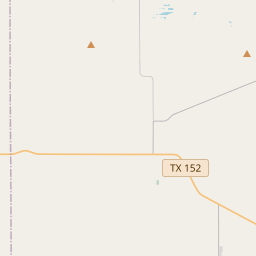Mobeetie United Methodist Church
Historical marker location:






Mobeetie developed from a buffalo hunters camp established in 1874 and Fort Elliott, which opened in 1875. Methodists Peter Gravis and J.T. Hosmer preached in the town in 1881, and by 1884, Mobeetie had a mission Methodist congregation. An 1898 tornado destroyed the sanctuary and most other buildings in town. In 1905, the community erected a shared Union Church building later bought by the Methodist congregation. The town moved closer to the railroad in the late 1920s. In 1930, church members built a basement in New Mobeetie and moved their worship services there. They built the present sanctuary in 1947, and the church continues to serve as an area spiritual center. (2006)
As one of the most visible programs of the Texas Historical Commission (THC), historical markers commemorate diverse topics in Texas history, including: the history and architecture of houses, commercial and public buildings, religious congregations, and military sites; events that changed the course of local and state history; and individuals who have made lasting contributions to the state, community organizations, and businesses.
Texas was once an independent country: After winning its independence from Mexico in 1836, Texas became its own country, known as the Republic of Texas. It existed as an independent nation for nine years before being annexed by the United States in 1845.
The county's formal establishment occurred in 1876, when it was carved out of Bexar County and named after Royal T. Wheeler, a chief justice of the Texas Supreme Court. During the late 19th century, Wheeler County experienced rapid growth as settlers migrated to the area to take advantage of the Homestead Act, which offered land grants to individuals and families. Cattle ranching became a prominent industry, and the county's economy thrived.
In the early 20th century, the discovery of oil in the nearby Panhandle fields brought a new wave of prosperity to Wheeler County. Oil wells were drilled, and the county experienced an economic boom, attracting both workers and investors. However, this period of prosperity was followed by the Great Depression, which led to a decline in economic activity and population.
In recent years, Wheeler County has focused on preserving its historical heritage and natural beauty. The county offers visitors opportunities for outdoor recreation, including hunting, fishing, and camping. Additionally, museums and historical sites in the area showcase the county's fascinating past, allowing residents and visitors to appreciate the rich history of Wheeler County, Texas.
Wheeler County Timeline
This timeline provides a glimpse into the major events and milestones that have shaped the history of Wheeler County, Texas.
- 1876 - Wheeler County is officially established on August 21, 1876
- 1880 - The town of Mobeetie becomes the first county seat
- 1881 - Wheeler City is founded and becomes the new county seat
- 1886 - The first courthouse in Wheeler City is built
- 1900 - A new brick courthouse is constructed in Wheeler City
- 1930 - The discovery of oil leads to a boom in Wheeler County
- 1950 - A new courthouse is built in Wheeler to accommodate the growing population
- 1960 - The population of Wheeler County reaches its peak at over 10,000 residents
- 1986 - A tornado devastates parts of Wheeler County, causing widespread destruction
- 2000 - The population of Wheeler County decreases to around 5,000 residents
- 2010 - Wheeler County celebrates its 134th anniversary